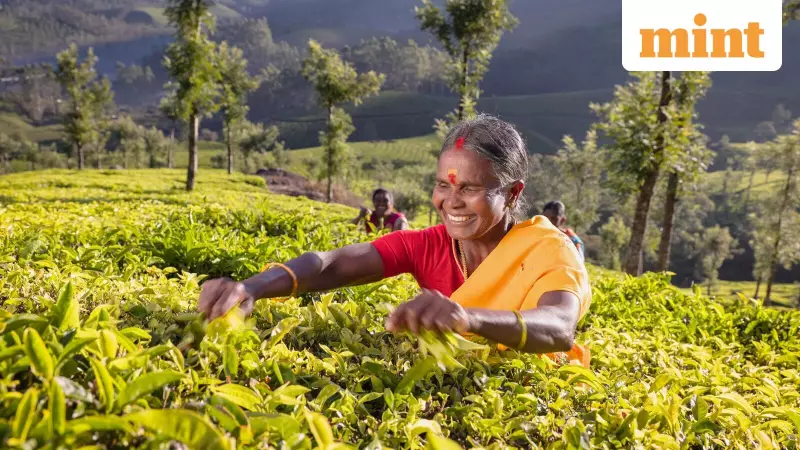
When Indian tea is mentioned, the mind typically conjures images of Darjeeling's misty hills or Assam's robust brews. However, a vibrant and diverse tea culture thrives in the south of India, contributing significantly to the nation's tea tapestry and waiting to be fully appreciated.
The Southern Tea Landscape
While producing around 17% of India's total tea output, the southern states boast a remarkable variety of flavors and growing conditions. Most of these tea gardens are nestled within the biodiverse expanse of the Western Ghats. For two decades, the Golden Leaf India Awards (TGLIA), organized by the United Planters' Association of South India, have been instrumental in bringing this regional diversity to the global stage.
Santosh Kumar, Chief Executive of Harrisons Malayalam (HML) in Kochi, emphasizes the awards' impact, stating that before TGLIA, South Indian tea was often generalized despite its inherent diversification. The awards have successfully highlighted the special attributes of the various tea regions of south India.
A Tour of Southern Tea Terroirs
The journey through South India's tea regions is a lesson in geography and taste. In Karnataka, tea grows quietly in the Malnad belt of Coorg-Hassan-Sakleshpur, an area predominantly known for its coffee plantations. Neighboring this is Wayanad in Kerala, which shares a border with Karnataka and possesses a tea-growing history spanning nearly a century.
Further exploring the high-elevation gems, the Nilgiris and the High Ranges (most famously represented by Munnar in Kerala) stand out. These are among the highest tea-growing regions in the world, with elevations often reaching around 7,000 feet. The Kolukkumalai tea estate, situated in the High Ranges on the Tamil Nadu-Kerala border, is frequently cited as the world's highest tea estate at nearly 8,000 feet. These lofty altitudes contribute to exceptionally flavourful teas, with the Nilgiris known for their fragrant character and the High Ranges producing a distinct, fruitier cup.
Moving further south, Travancore in Kerala emerged as a tea region in the late 19th century, with plantations in Peeramade, Vandiperiyar, Thekkady, and Vagamon. The rich biodiversity here, featuring plantation crops like pepper and cardamom, influences the tea, resulting in a notably well-balanced profile.
Celebrating Excellence and Diversity
The TGLIA awards, now in their 20th year, function as a premier platform to showcase the pinnacle of South Indian tea quality. The competition is rigorous, with entries undergoing multiple evaluation rounds culminating in a final blind tasting by an international panel. Recent award entries showcased teas from a wide array of regions, including the Nilgiris, Wayanad, Travancore, the High Ranges, the Anamallais in Tamil Nadu, parts of Karnataka, and smaller regions like Nelliyampatti in Kerala, and Singampatti, Kanyakumari, and Madurai in Tamil Nadu.
Jurist Kurush Bharucha, part of the tasting panel, praised the impressive flair of south Indian teas, noting how each agro-climatic zone reflects a unique taste, diversity, and terroir. In the latest awards, Woodbriar Group and Harrisons Malayalam (HML) led the winners' list, each securing eight awards. Consumers looking to explore these celebrated teas can seek out brands such as Harrisons Tea Town, Parry Agro, Briar Tea (from the Woodbriar Group), Darmona Tea, and Ripple Tea through their online stores.
This focused recognition is a powerful reminder that the story of Indian tea is far more complex and delicious than a few famous names. The south, with its varied elevations, climates, and traditions, offers a world of tea experiences waiting to be discovered by enthusiasts everywhere.





